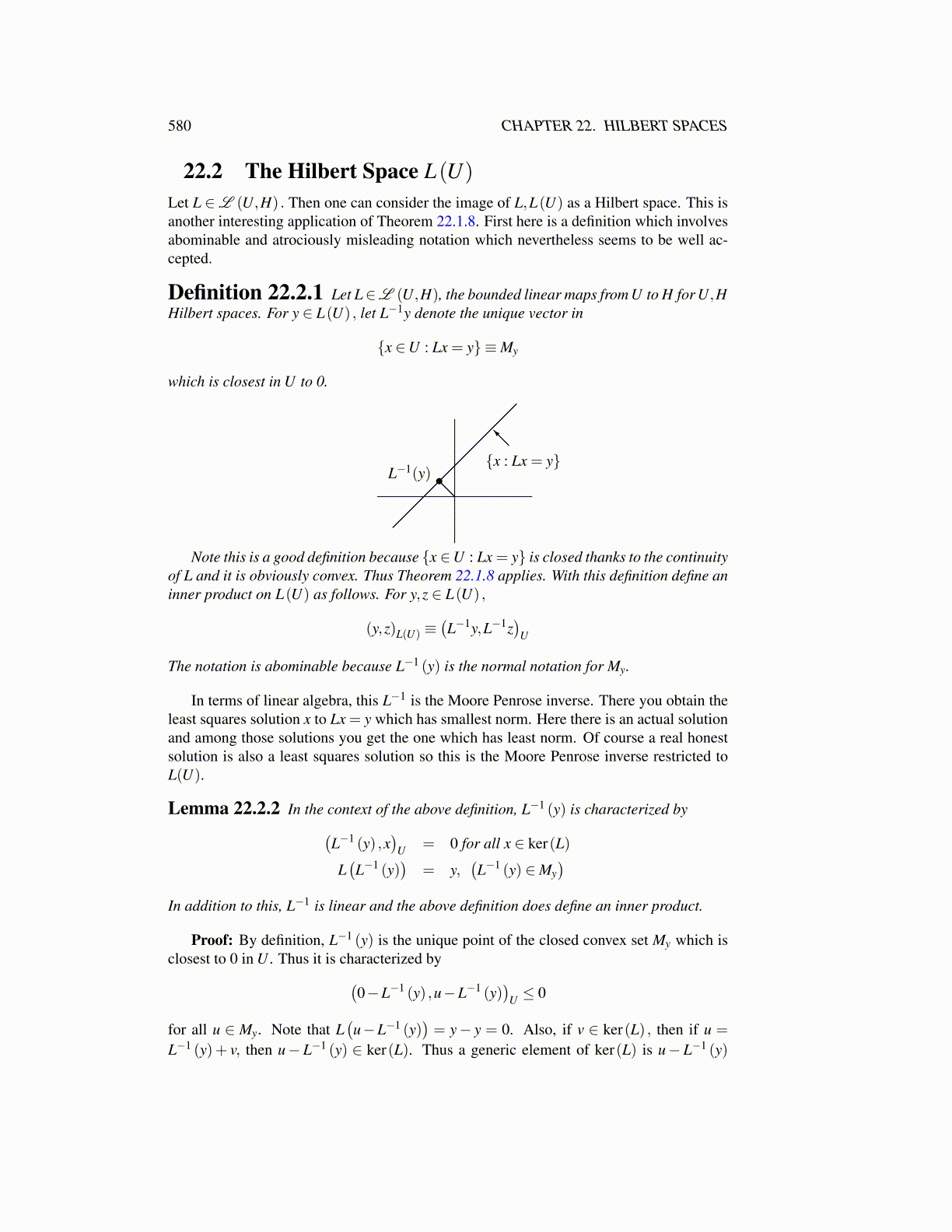
580 CHAPTER 22. HILBERT SPACES
22.2 The Hilbert Space L(U)
Let L ∈L (U,H) . Then one can consider the image of L,L(U) as a Hilbert space. This isanother interesting application of Theorem 22.1.8. First here is a definition which involvesabominable and atrociously misleading notation which nevertheless seems to be well ac-cepted.
Definition 22.2.1 Let L∈L (U,H), the bounded linear maps from U to H for U,HHilbert spaces. For y ∈ L(U) , let L−1y denote the unique vector in
{x ∈U : Lx = y} ≡My
which is closest in U to 0.
{x : Lx = y}L−1(y)
Note this is a good definition because {x ∈U : Lx = y} is closed thanks to the continuityof L and it is obviously convex. Thus Theorem 22.1.8 applies. With this definition define aninner product on L(U) as follows. For y,z ∈ L(U) ,
(y,z)L(U) ≡(L−1y,L−1z
)U
The notation is abominable because L−1 (y) is the normal notation for My.
In terms of linear algebra, this L−1 is the Moore Penrose inverse. There you obtain theleast squares solution x to Lx = y which has smallest norm. Here there is an actual solutionand among those solutions you get the one which has least norm. Of course a real honestsolution is also a least squares solution so this is the Moore Penrose inverse restricted toL(U).
Lemma 22.2.2 In the context of the above definition, L−1 (y) is characterized by(L−1 (y) ,x
)U = 0 for all x ∈ ker(L)
L(L−1 (y)
)= y,
(L−1 (y) ∈My
)In addition to this, L−1 is linear and the above definition does define an inner product.
Proof: By definition, L−1 (y) is the unique point of the closed convex set My which isclosest to 0 in U . Thus it is characterized by(
0−L−1 (y) ,u−L−1 (y))
U ≤ 0
for all u ∈ My. Note that L(u−L−1 (y)
)= y− y = 0. Also, if v ∈ ker(L) , then if u =
L−1 (y)+ v, then u− L−1 (y) ∈ ker(L). Thus a generic element of ker(L) is u− L−1 (y)